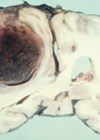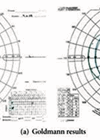Ophthalmology
Brain tumours in adults: the essentials for an ophthalmologist
The author provides a review of the common intracranial tumours in adults (other than pituitaries) which may present to an ophthalmologist. Primary malignant brain tumours comprise 3% of adult cancers but with an ageing population such tumours are becoming more...
Sharing best practice and landmark evidence in glaucoma care
Evolving technology, best practice and landmark evidence in glaucoma care were reviewed by an international expert faculty in session presentations and debates during the 11th Moorfields International Glaucoma Symposium 2019. The authors were meeting chairs and provide an overview of...
Intracameral antibiotics in cataract surgery: current evidence base
Following on from our recent online survey*, the authors examine the use of intracameral cefuroxime as the standard of care in cataract surgery. Cataract extraction with intraocular lens implantation is one of the most frequently performed surgical procedures in the...
Quality matters in the management of serious eye disorders
The author discusses the first quality standard for serious eye disorders from NICE and takes a look at new care models for enhanced service delivery. Patient backlogs pose risks to patient safety, with research showing that people are losing sight...
The history of ophthalmology: John Argyll Robertson and Douglas Moray Cooper Lamb Argyll Robertson
The author shares the story of an extraordinary father and son, two of the major figures in defining the specialty of ophthalmology as we know it today. The renowned Glasgow Surgeon Peter Lowe described ophthalmic surgery in his legendary surgical...
Measuring patient-reported outcomes after refractive surgery to assess patient satisfaction
Patient-reported outcomes enable surgeons to evaluate patients’ symptoms and satisfaction after laser vision correction. The great majority of patients are pleased with their outcomes from laser vision correction, whether it is with photorefractive keratectomy, laser in-situ keratomileusis (LASIK), or small...
The Princess Alexandra Eye Pavilion (PAEP) Edinburgh 1969-2019
In the early 1960s plans were afoot to create a new Edinburgh Royal Infirmary to replace the existing building which dated from 1870, it having replaced an earlier one dating from 1729. It was originally planned to build on the...
Newer generation IOL platforms designed for high-quality visual performance after cataract surgery
Expanding intraocular lens (IOL) capabilities provide broadening options, ranging from next-generation monofocal IOLs for basic cataract surgery, to specialised premium IOLs for lens-based presbyopia correction and astigmatism correction at the time of cataract surgery. Rod McNeil considers several newer alternative...
The ‘theatre of the mind’: Charles Bonnet Syndrome and Esme’s Umbrella
The founder of Esme’s Umbrella shares her experience with the poorly understood condition Charles Bonnet Syndrome and the creation of the campaign. Many years ago, when I was a young actress, I was in an American play called ‘Butterflies are...
Assessing everyday visual function in dry AMD – what matters to the person?
Age-related macular degeneration (AMD) is the primary cause of blindness in the developed world and is accountable for more than one half of sight impairment registrations within England and Wales [1]. AMD is prevalent in people aged 60 years and...
A pituitary tumour from 1927
The author shares a clinical case from Edinburgh Royal Infirmary’s archives. It is not often in the course of a clinical career that one gets the opportunity to review a patient who had been treated by a pioneer neurosurgeon some...
Pituitary adenoma causing compression of the optic chiasm
A 21-year-old girl presented to her general practitioner (GP) with a three-month history of headaches, becoming more frequent and associated intermittent vomiting that did not improve with simple analgesics. There was a strong family history of migraines. She was initially...















